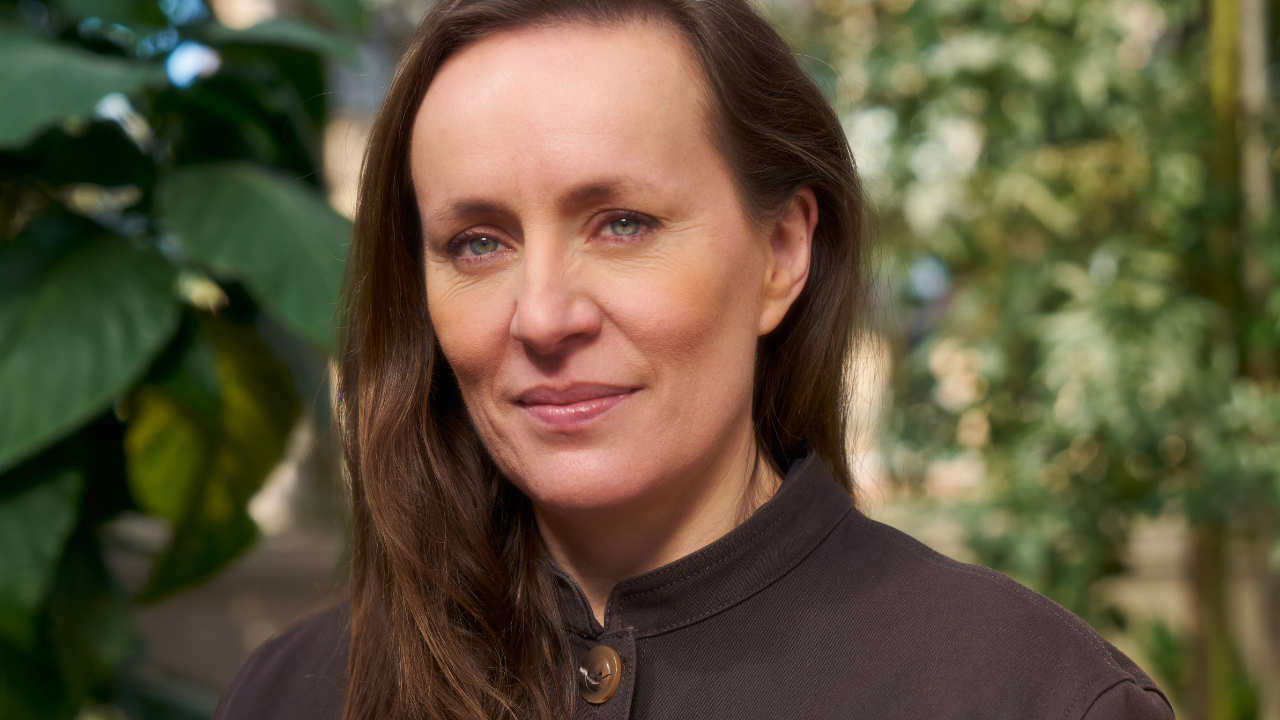Kenneth Goldsmith
An Interview with the founder of UbuWeb
An Interview with the founder of UbuWeb
The slow-to-load, line-by-line display of pre-broadband interlacing graphics looked like concrete poetry to Kenneth Goldsmith, so in 1996 he turned his collection of books into an online archive. Fifteen years later, the poet and UbuWeb founder still scans and uploads concrete poetry, meanwhile the site has grown to include experimental music MP3s, copies of Aspen magazine, videos ranging from René Clair to Paper Rad, and other out-of-print work loosely defined as ‘avant-garde’.
UbuWeb (http://www.ubu.com) runs out-of-pocket. Goldsmith refuses funding, ‘because if I take that money, then I have to start paying everybody.’ Rather than asking permission from rights holders, he takes work down when requested. While still a hobby, the site has grown more ‘institutionalized’, Goldsmith told me, with museums and universities linking to content. ‘It went from a pirate site to artists asking “please can I be on Ubu”.’
Not everyone is a fan of this way of content distribution. After the site was hacked last autumn, a debate broke out on Frameworks, an experimental film mailing list. Several members complained about UbuWeb’s flippant stance on copyright and poor picture quality. Goldsmith responded with ‘An Open Letter to the Frameworks Community’, revealing the mission of the site while concluding that ‘Ubu is a provocation to your community to go ahead and do it right, do it better, to render Ubu obsolete.’ I met with Goldsmith to discuss the letter and other operational issues.

Joanne McNeil: How would you describe the work that shows up on UbuWeb?
Kenneth Goldsmith: I would say it falls under the general rubric of avant-garde, but I’m not sure what avant-garde is. It’s always changing. One thing that all the works in Ubu have in common is they are not worth anything monetarily. Nothing on the site ever made money. Nothing on the site probably ever will make money. So you have an inversion of the market. You’ve got Marcel Duchamp’s music instead of Duchamp’s objects. A lot of painters too, but with the odd LPs that they make. Kind of the inverse of what we usually think of as important.
JM: Is it a conscious decision not to include pictures of paintings or sculptures?
KG: There are some images of paintings in the Aspen magazine section, but they are really bad – lousy reproductions from the Powers’ Collection. Painting doesn’t look so good on the web. It looks better in life. Sculpture looks better in life. What you end up with is just a reproduction. Whereas with film or with sound or with poetry, you get the deep primary experience not the secondary experience. The web delivers those primary experiences very well.
JM: And the site is not on Google?
KG: I removed it from Google. I didn’t want to deal with copyright-holder mania.
JM: But the Twitter stream is accessible through Google.
KG: I’m very careful about that. There’s a lot of stuff that doesn’t go out on the Twitter stream. I also killed the RSS feed from the site because it was going into Google. And I killed a mirror. I need to be more controlled about what goes out and doesn’t.
JM: And you have a large Facebook presence …
KG: I’m not on Facebook. Someone else made that. I have no idea what goes on there.
JM: Do you know who was behind the site hacking last autumn?
KG: I have no idea. I don’t even know if it was Ubu proper that was attacked. All bandwidth and server space is donated – that’s how we run this for free. The site kept being hacked. Finally, the cyber-security people at York University shuttered the site. They took the box out for detective reasons to figure out what went on. I just had to take the site offline. I couldn’t run it. It was down for almost two months. I thought that might be the end of it.
JM: And this resulted in the Frameworks discussion. Have you heard from them since posting the open letter?
KG: The discussion just stopped. There was no response from that community to my letter, not even in-fighting. It ended. Amazing. Of course I said start their own … but nobody did. Ubu is terrible on every level. There should be hundreds of UbuWebs out there. Why am I the only one? Actually, I know why – because I’m not afraid of copyright and they all are.
JM: Do you take legal advice?
KG: No, we try to be nice. If I get someone requesting a take-down, I try to explain we’re not selling anything, that it’s better to be on here than not be on here and that we’re sorry, we thought this was out of print. Ubu makes mistakes. As I said in that letter, if we had to ask permission it wouldn’t exist. That’s why most people can’t do what we do. If you have to ask permission, it starts to involve teams of lawyers, paper work, contracts and brokers, rights clearances, and all that official stuff. If they insist, then I take it down. It’s a fluid archive. Tomorrow certain things might not be there. But for every one thing that’s taken down, a hundred things go up.
JM: Do you get requests for better picture quality?
KG: I like bad quality. It shouldn’t be too good, because then you should go out and support organizations such as Anthology Film Archives or EAI [Electronic Arts Intermix]. Ubu doesn’t challenge that. It should be a sketch of the real thing. But unfortunately for many people it really is the real thing, because they don’t live in a place with Anthology down the street showing Stan Brakhage films every night.
JM: How poor is too poor a quality image for Ubu?
KG: It’s never too poor! We get really bad VHS dubs with lines going through it where it does a vertical roll. It’s a marvelous lo-fi aesthetic. We did take down a bunch of things from Peter Kubelka because people were really complaining these were bad. They said, ‘we get it, but this is a complete misrepresentation of the work.’
JM: Sometimes when I watch a video on Ubu, I tab from my email and back without seeing the full sequence.
KG: Language is active on the web. You can grab it. You read with a cursor. You can highlight, like you doodle on a pad. And you drag an image around. There’s a physicality that’s begging to be used by writers as ways of writing. Like concrete poetry.
JM: Are you finding remixes of UbuWeb material?
KG: You’ve heard of Kurt Schwitters but most people have no idea. Some kids are like, ‘check out these weird sounds!’ They get thrown into dance mixes! I’ve heard from people in Zurich who were on a dance floor and suddenly some sound poetry comes into it from Ubu. So Ubu for a lot of people is just a bunch of weird sounds.
JM: Sometimes I’ll have three open tabs of Ubu videos and watch them all at once.
KG: An editor on Ubu, Danny Snelson, actually did that. He curated it to balance beautifully. And isn’t that the avant-garde cinema? Isn’t that Chelsea Girls (1966)? Here Warhol becomes very predictive again. Warhol would watch two televisions at a time.
JM: I wonder how many browser tabs Warhol might have kept open as an Internet user…
KG: Absolutely. It’s about divided attention as a new strategy of attention. I’m not being a cyber-futurist, every idea here can be found in the 20th century history of avant-garde art. Whether it’s concrete poetry and the web or split screens and divided attention coming from Warhol, that’s what Ubu’s all about.
All of that, which was pushed aside in favour of Picasso and the MoMA narrative of 20th-century art is now back with a revenge informing us how to interact with the web and how to be digital. It’s all there. As much as I love Picasso, Les Demoiselles D’Avignon (1907) is not going to tell us anything on how to live in the world today. The point I want to make is how prescient the ephemeral avant-garde was to the way we are today.
JM: What would you say are key Ubu works relevant in the digital age?
KG: I can’t even say. So many collage works, so many sound works that are layered. There’s Harry Smith, for example, with incredible superimpositions like two tabs open at the same time. John Cage’s works on Ubu – his ‘Europeras’ (1987–91) where all sorts of things are happening at once. He was always interested in dividing attention. He would do things called music circuses with 16 things performed in a given room at a given time. Like the recent Christian Marclay retrospective at the Whitney. Dziga Vertov is telling us how to be digital too. It’s all there. But that wasn’t speaking to the moment. As Duchamp said in 1913, in 50 years people will understand it. In fact, in ’63, at his Pasadena Art Museum retrospective there is the entire youth culture at Duchamp’s feet with conceptual art. Duchamp’s another one who teaches us how to be digital. I’ve never said this before, but that’s exactly what the site means.












